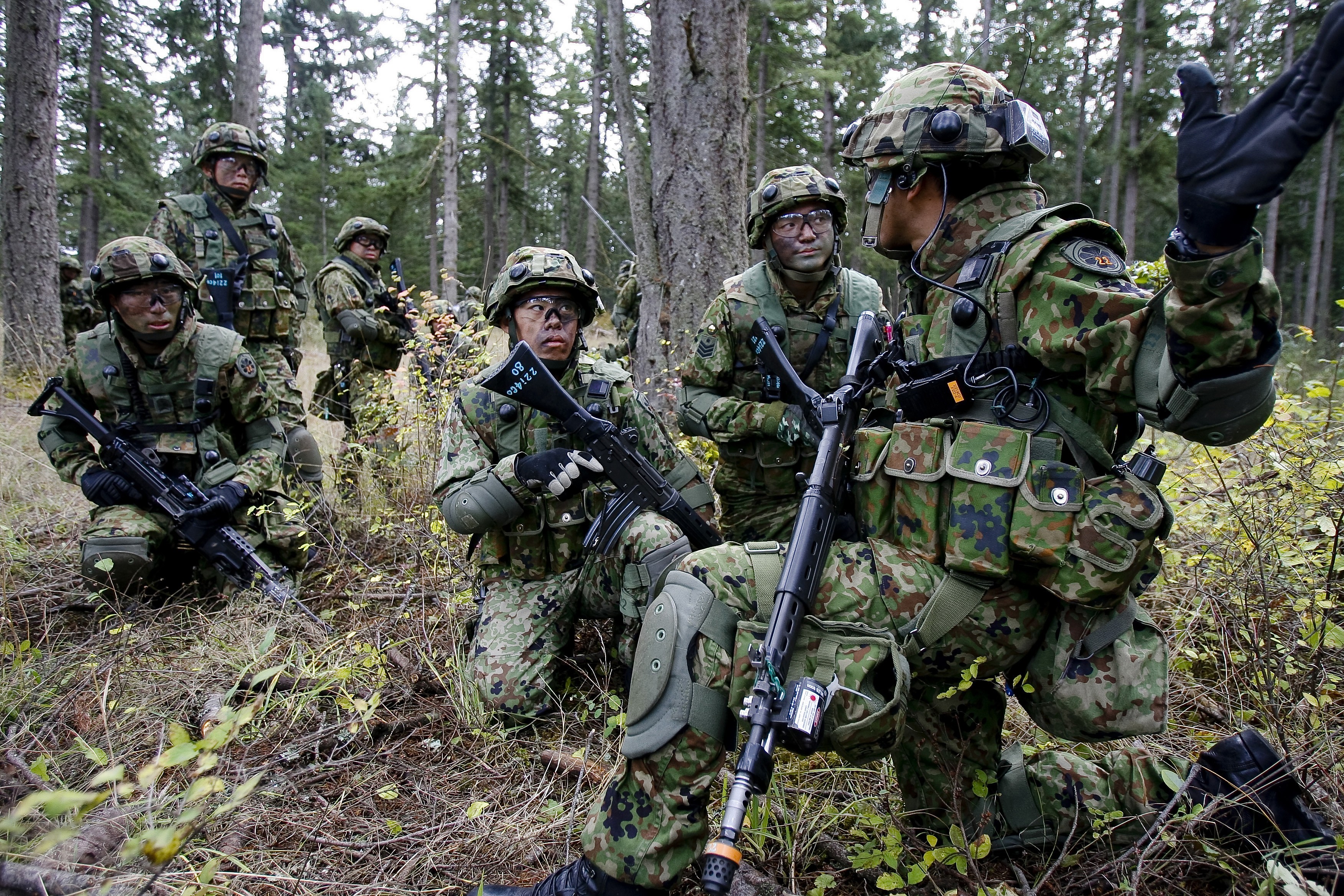FORT LEWIS, Wash. - In its continuing dedication to supporting Pacific Command's areas of responsibilities, I Corps and Fort Lewis played host Oct. 8-19 to the Japan Ground Self-Defense Force's 22nd Regiment for two weeks of bilateral training.
After spending the better part of a fortnight conducting individual and collective training with 1st Battalion, 17th Infantry Regiment, the two units bilaterally attacked Leschi Town Oct. 19 to rid it of "communists" holed up in the town's buildings during "Operation Buffalo Rising."
The exercise was performed at the company level, and 1-17's A Company was first to attack the town with the Japanese.
Each American and Japanese platoon and squad had particular buildings they were responsible for clearing and then holding, sometimes working together to clear a building and other times being solely responsible for a given building. Though the goal of the exercise was to eliminate all enemy threats in the town, each unit had its own individual mission, said 1-17's commander, Lt. Col. Jonathan Neumann.
"The Japanese have been able to work specific training objectives that they had; we've been able to work some of our own training objectives," he said. "But, in most cases, our training objectives mirror each other so we've been able to execute them together and learn from each other and come out with both units having a higher level of training."
Neumann said in addition to continuing to strengthen the United States' relationship with Japan, this training provided 1-17 Inf. with two major benefits. "We get two real benefits (from working with the Japanese). The first is any time you get another repetition of our standard attack is great combat training for us," he said.
"But then working with a partner nation, in this case, this Japanese regiment and this rifle company side-by-side, that's very realistic. We will very seldom be alone on a battlefield without a coalition partner or a host nation or somebody fighting alongside or even within our formations.
This reinforces that to our Soldiers. In this case it's the Japanese, but it could be any nation." One of the biggest hurdles in this type of bilateral exercise with a foreign nation's military is the language barrier. But the 10 interpreters, combined with the use of hand signals and colored flags marking a cleared room or building, helped lessen that communication gap.
It was because of this language barrier that some were a bit unsure of what to expect heading into the two weeks of training. But, said C Co., 1st Platoon's Spc. Jordan Scott, things worked out just fine.
"When we started training with them, it actually turned out to be pretty cool," he said. "The language barrier was a little difficult, but we used hand gestures or they'd always have someone in their group who spoke English and was able to translate for us. The majority of the time, they understood us. But sometimes they kind of looked at us giving us this look that they didn't get it, so they'd call over a translator."
Because the U.S. Army is one of the strongest and most efficient in the world, there is sometimes a tendency to think it has nothing to learn from other militaries - not so, said Neumann.
"We always start these things thinking we're going to be the teacher and the other unit (will be) the students," he said.
"But you quickly realize it's not always that case. There's a lot of give and take, and a lot of things that they can demonstrate that we can learn from, as well."
Neumann said one of the main things he felt the Japanese soldiers learned while working with the Americans was how the U.S. Army relies on a strong group of noncommissioned officers, which is quite a bit different than what they are used to.
"They command and control a little bit different - they are more officer centric," Neumann said of the Japanese chain of command.
"That works for them. We will take that away and be able to use that as an example of what to look for when we train with other armies or when we operate, for example, next to the Iraqi army or some folks who are also probably more officer centric than based on a backbone of noncommissioned officers like we are. I think we'll find that in most places in the world."
Colonel Shigeru Kanno, 22nd Regt.'s commander, said it was the leadership from the American NCOs and officers that impressed him most.
"The impression ... I had through the training (was) that (the) battalion commander (Neumann) had great leadership, and smart staffs who were trusted," Kanno said through an interpreter.
"In addition, their communication seems perfect." After the exercise was completed, Kanno was complimentary of his and his unit's time here on Fort Lewis. "I really want to thank ... 1-17. They trained with us, even though it was an important period of two weeks to prepare for a mission in Iraq for next year," Kanno said, "so we could have a precious experience under the favor of their cooperation."
Matt Smith is a reporter with Fort Lewis' Northwest Guardian.








Social Sharing